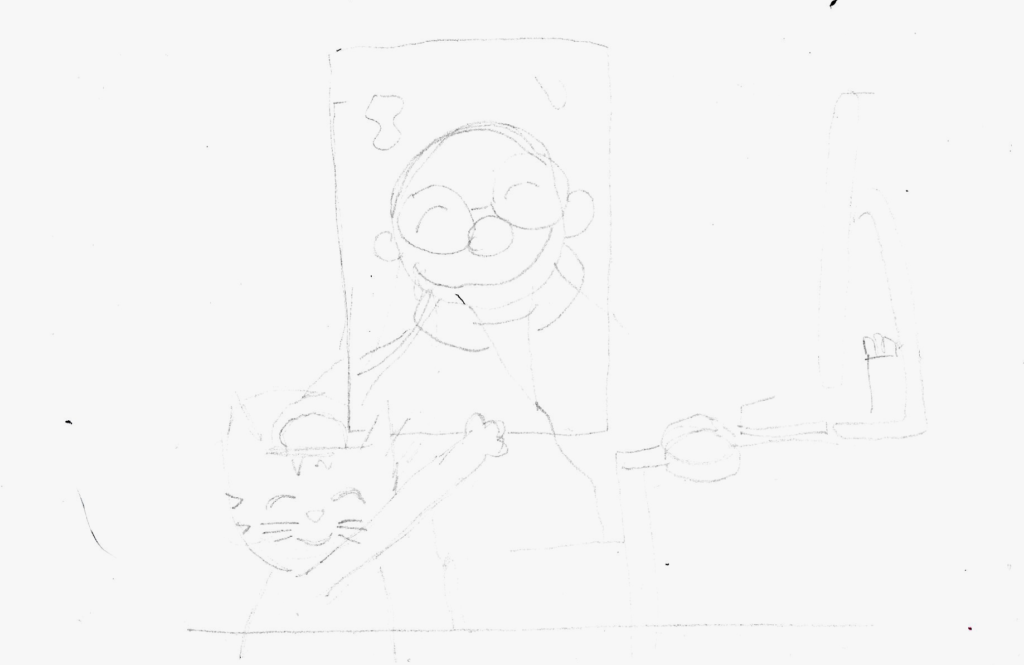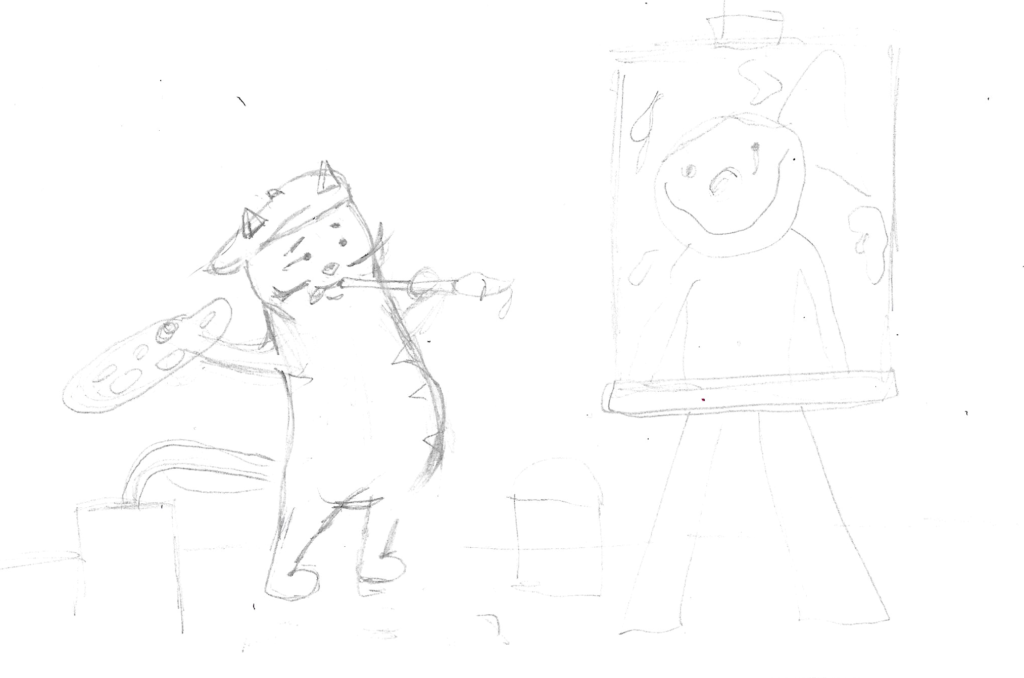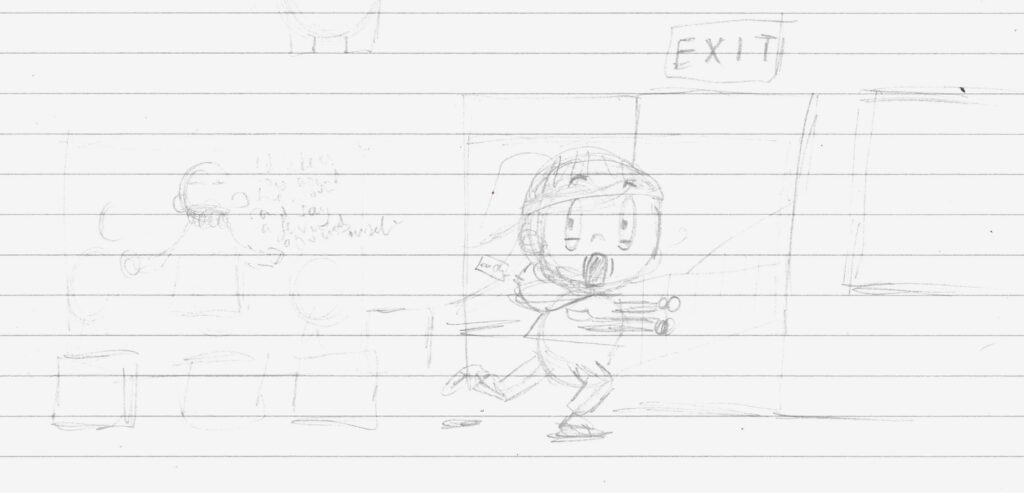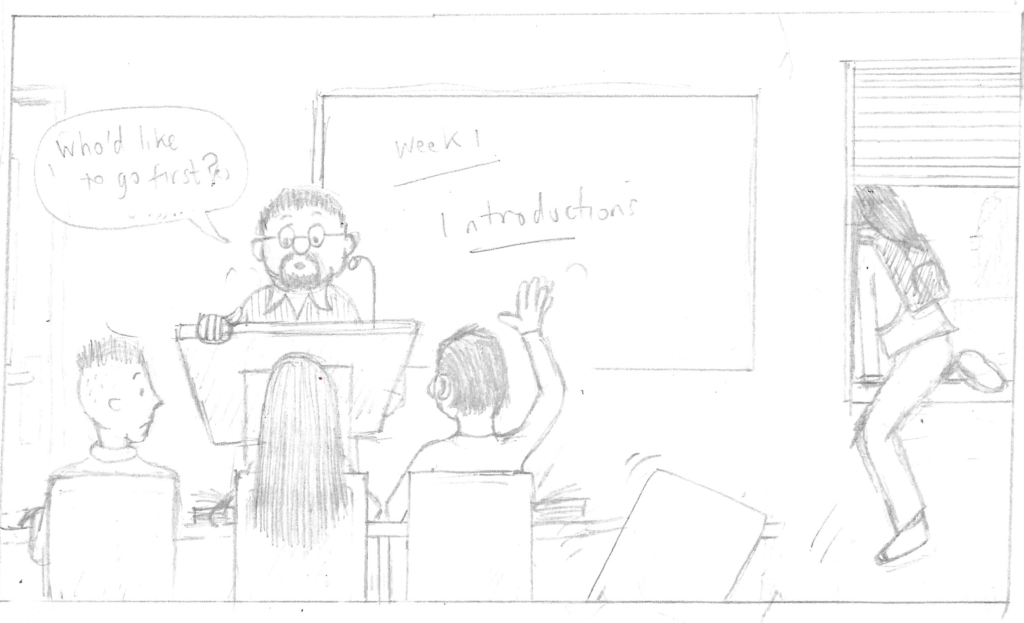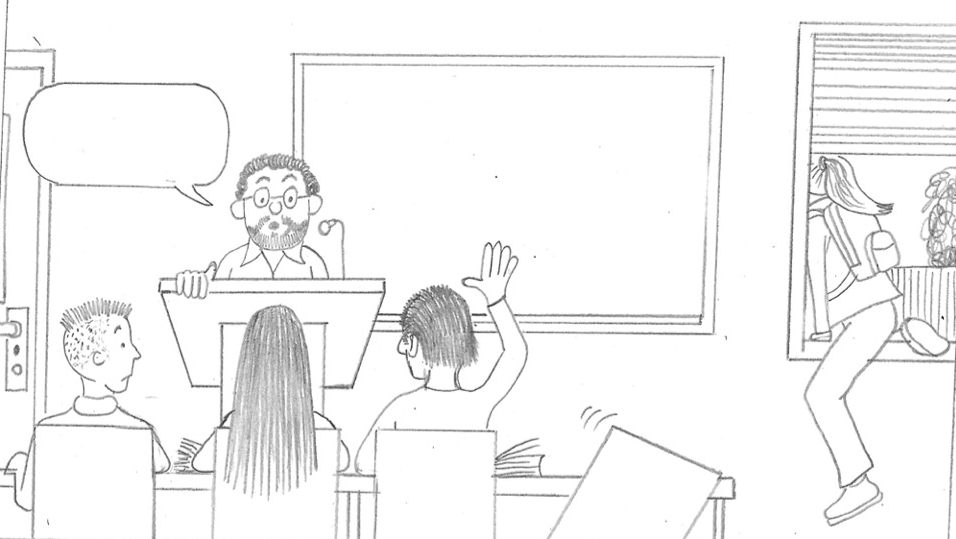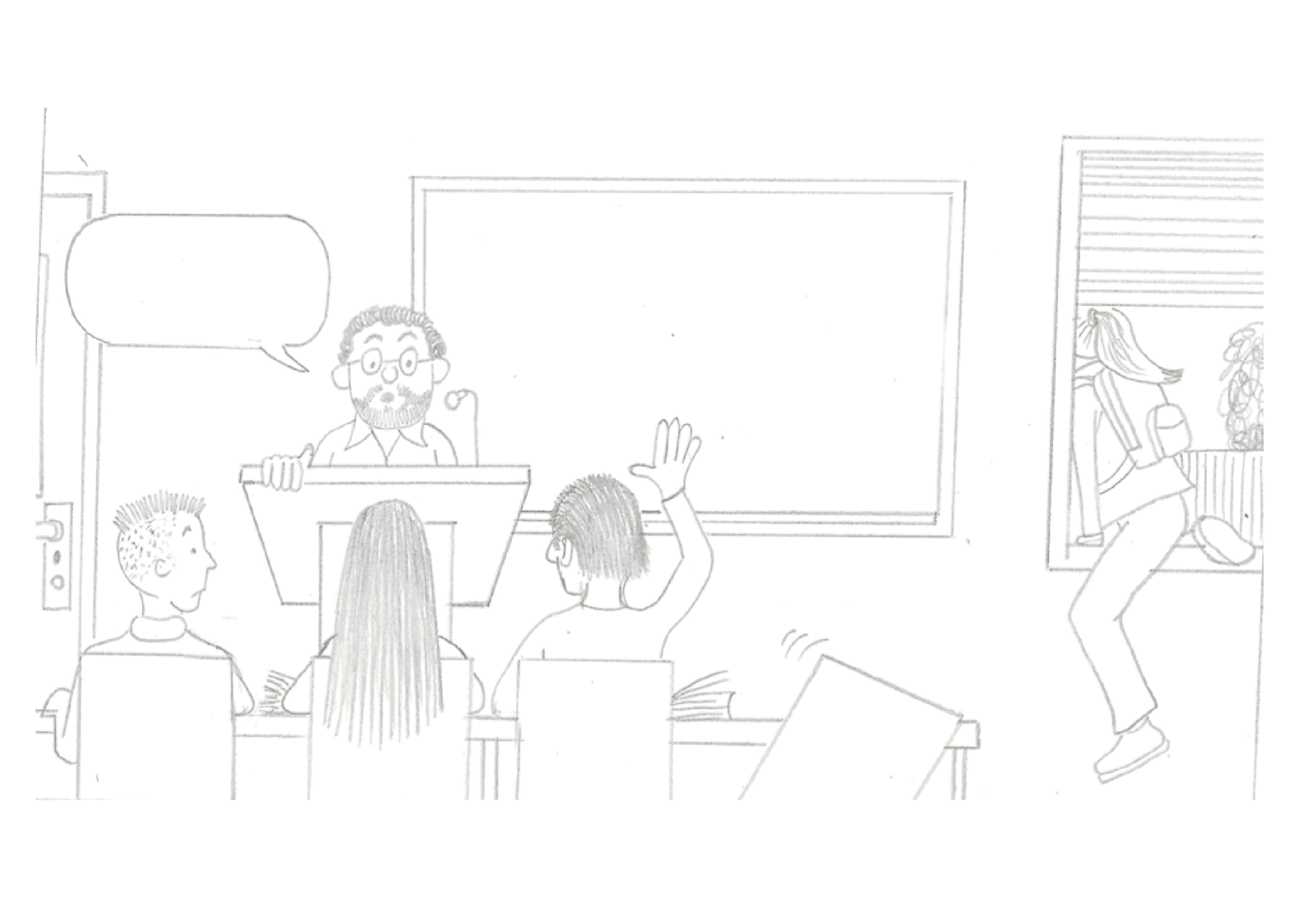Brief
The first assignment is to introduce yourself to your tutor and give them the opportunity to get to know more about you and your artwork. You are going to make a self-portrait, telling your tutor about yourself, your visual interests, the drawing styles you enjoy working in and maybe some ideas of what you would like to develop in the course.
Part 1: Research
Many cartoonists and comic artists draw self-portraits of themselves at their drawing table or desk. Artists often draw themselves in the same style as three published work, and often surrounded by their own characters or creations. In combining their style with a portrait of themselves, their drawing turns them into a comic character themselves.
To see some examples, taken some time to search online using terms like:
- ‘Marvel comic artist self-portrait’
- ‘DC comics artist self-portrait’
- ‘Cartoonist self-portrait’
- ‘Underground comics artist self-portrait’
Part 2: Self Portrait
Write a short, 100-word personal statement. Begin it:
‘My name is…and this portrait show me with images of my interests.’
Then describe some of these characters and influences. Now translate this into a picture of you surrounded by what you have described. Make it something that shows your own visual interests, drawing style or personal history.
Research
As I have very little prior knowledge of many comic artists or cartoonists by name, I initially used the search terms suggested in the brief, but was surprised by how few results I could find. I set up a Pinterest board with some of these. I then selected those that appealed to me the most from this collection.
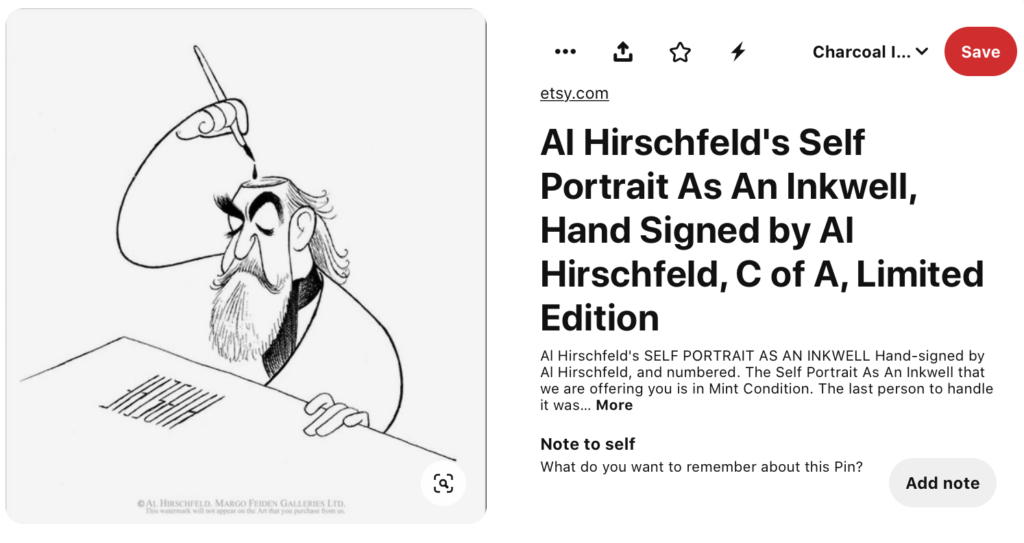
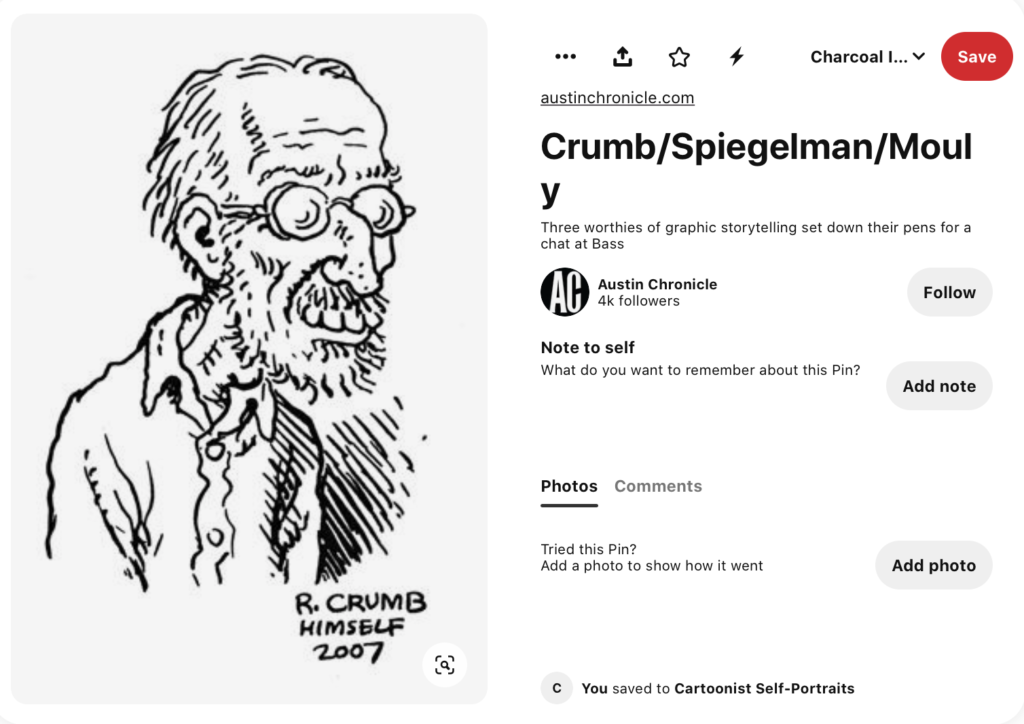
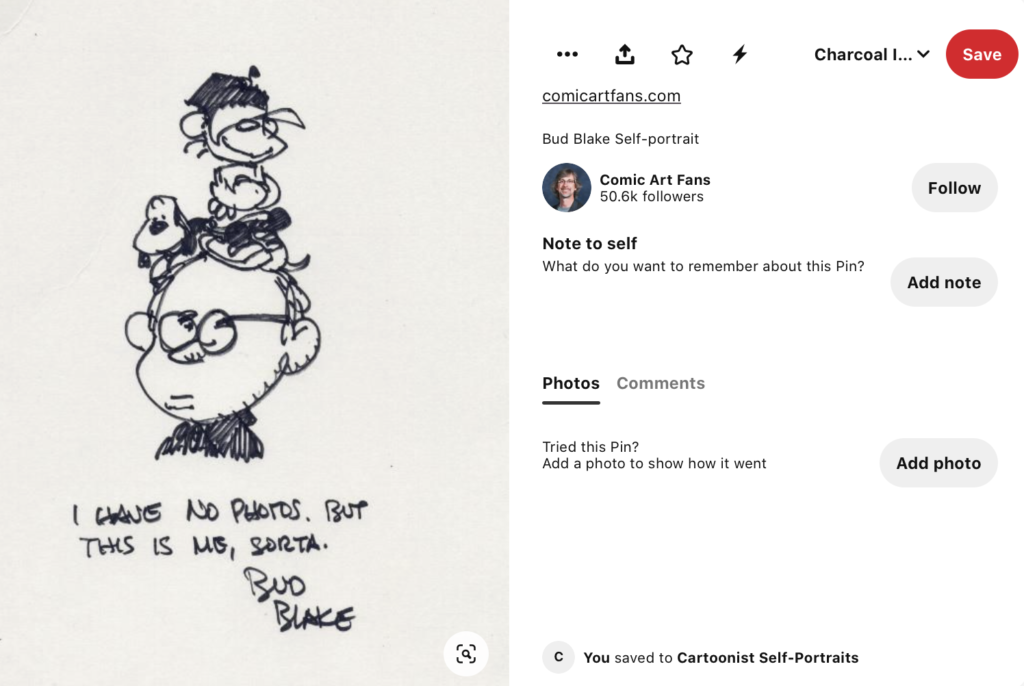
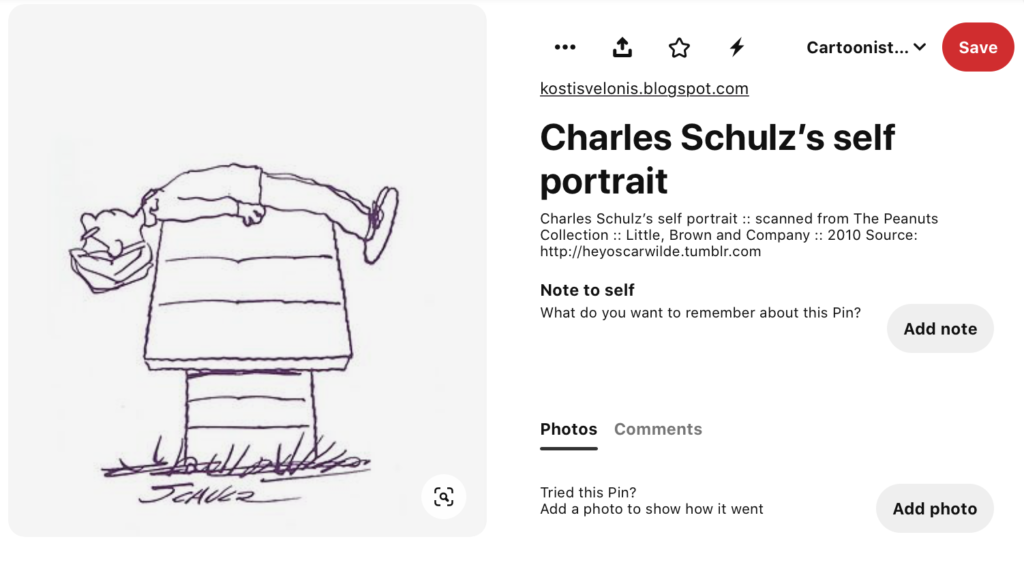
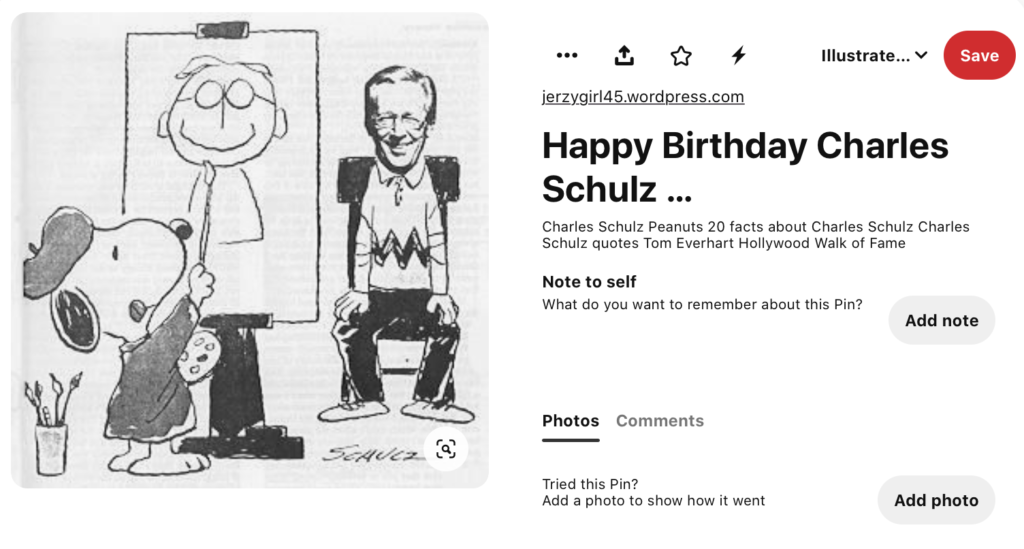
From this selection the main themes I seemed to be drawn to included:
- Black and white line drawings – sketchy/loose style
- Fairly simplistic and clean in design
- Humourous
- Not ‘realistic’
I did notice that there did not seem to be many examples of female cartoonists/comic book artists, but I found an article about this issue. I would definitely like to explore this area more in depth during the course.
I really felt that my lack of knowledge was holding me back, so I decided to begin to remedy this by spending a great deal of time reading about this history of comics and a large selection of artists. I thoroughly enjoyed this aspect and it certainly ignited my interest in the genre. I found that I had gone down a rabbit hole and everything I read led me to more and more information. I reached a point where I decided I would have to shift my focus back to the assignment, but continue my research alongside – this will be an ongoing effort. What I did find particularly revealing was how many of the characters I recognised, mainly from animations/films, and had been unaware that they originated in comic strips.
I did come across an extremely informative website, Comiclopedia, run by a comic shop in Amsterdam called Lambiek. I spent several hours learning about many artists (there are thousands of entries, so it may take a while…). With regards to this assignment, I noticed that several of the entries have self-portraits of the comic artist being described, these included (please note: the self-portraits are are the bottom of the articles):
Chester Gould: famous for Dick Tracey – I liked the way Chester Gould placed himself with his characters and incorporated his role as the artist into the drawing.
Steve Ditko: famous for Marvel titles such as The Amazing Spiderman and Dr Strange – I liked how Ditko had used this drawing to put forward an opinion of Stan Lee in a non-too-subtle way. The layout is a 3-panel strip and is in the style of his comic book illustrations, along with the narration and speech.
Al Capp: famous for Li’l Abner (and also quite a controversial individual) – I thought it was a good example of incorporating oneself with a character in the same style as the comic strips.
Floyd Gotterson: famous for Mickey Mouse – I liked that the self-portrait was in the exaggerated form of a caricature. It shows Gotterson at work and I thought it put across his personality, which I interpreted as being fun and laid-back.
The artist that I most enjoyed reading about and viewing work by was Carl Banks. I have always been a fan of the character Donald Duck as he is so expressive and I particularly liked it when he went into one of his rages! I did not realise there were a comic strip/book versions of him. There were several artists attributed to drawing Donald Duck, including Al Taliaferro who worked on the newspaper strip version, but Carl Banks created longer stories for comic books. I really enjoyed Banks’s self-portrait with Donald painting it, fully immersing himself in the character’s world.
Personal Statement
My name is Caroline. I am a novice when it comes to comic books, but I am very much looking forward to learning about the genre.
I have mostly worked in a digital format in recent years, but want to return to using analogue materials as well. I enjoy illustrations that have wit and humour, even when tackling serious issues. I am most interested in characters and stories.
I really dislike having any attention directed on me and I am a very private individual, so I have always struggled with introduction exercises, whether in person on not. I prefer my work to demonstrate my interests and personality.
Ideas
I found myself procrastinating with this assignment as I was not keen on the idea of doing a self-portrait, as mentioned in my personal statement. Additionally, although I liked some of the examples I had discovered, I did not feel justified to show myself at my desk looking like a professional artist, when I am not one.
I made a couple of sketches based on the concept of my cat drawing the portrait of me, influenced by some of the examples I had researched which showed the artists’ characters doing just this.
I was not really inspired much by these attempts so, after some further thought and looking again at the examples of Steve Ditko and Chester Gould from my research, I decided to take a different approach. I wanted to incorporate myself in a cartoon that demonstrated my sentiments towards introduction exercises in a humorous way. I have a particular aversion to new class-based situations where you are asked to talk about yourself in front of everyone else, often about nonsensical topics – it fills me with absolute dread. I always have the urge to escape by any means necessary, which is what I chose to depict.
After thinking about different possibilities of how I could visualise this idea, including an ejector seat and simply running out of the door..
…I made a rough sketch of me escaping through the classroom window.
I was quite happy with this concept, so I made a cleaner version using my light-box.
Working in Illustrator
As mentioned in my personal statement, I currently work mostly in a digital format (specifically Illustrator), so as this assignment asked for me designed to show my ‘style’, I decided to continue in this way. I set up an artboard at A3 size and scanned in my drawing, using this as a template. The development process can be seen below in an animated GIF:
I have been trying to improve my use of tone, so spent a substantial amount of time considering and adding shadows, along with some highlights.
Final Illustration
Overall I was quite pleased with the final result, although there were definitely some aspects I would like to improve on, which will be discussed in the Final Thoughts section below.
Final Thoughts
I thoroughly enjoyed the research aspect of this assignment, it genuinely opened my eyes to whole new world of artwork and made me very keen to continue my journey though this unit. I will continue to expand my knowledge of comic books, the artists and issues surrounding the genre.
As stated on numerous occasion, I was less keen on the self-portrait aspect of this assignment, but I felt my solution did meet the brief as it depicted my ‘style’ in terms of both rendering and use of humour, and I am also present in the illustration. I thought the layout of the elements communicated fairly clearly the message I was trying to convey, with viewer being guided across the page from left to right (which I realise is a cultural-specific way of reading). I also tried to make considered choices in terms of colour and not just select saturated, bright ones. Additionally, I have been adding more little details to my work, such as the file on the shelving unit, which help to make the illustration feel more complete.
In terms of aspects I would like to have done better, these include improving my representation of the human form and hair. I am working on these and making slow progress, but I still have a long way to go.
Reflection After Tutor Feedback
Following feedback from my tutor, it was interesting to return to this initial Assignment after some time and consider certain elements I did not previously comment on.
The use of red for the man’s jumper catches the viewer’s initially attention and as the eye moves across the page it focuses on the red shoes as I make a hasty exit. The fact that the shoes are red and therefore stand out raises questions about just how much the anonymous character, with her face hidden, really does want to blend into the background… I felt the red at both ends of the illustration also added a sense of balance to the composition.
If I were to make a future self-portrait, I still feel I would like to remain enigmatic, but there are other ways I could explore this, for example attempting to draw a caricature version of myself, which would exaggerate my aversion to being in the spotlight, but I could also include other clues to my personality, e.g. having a rage when my computer crashes, or my cat making an appearance in the illustration. As I develop my drawings skills, I would prefer to try an analogue version as these seem to have a more personal feel to them.
References
Comics Kingdom, (n.d.). Vintage. [online] Available at: https://www.comicskingdom.com/?category=vintage [Accessed 23 June 2021].
Knudde, K. (2021). Al Capp. [online] Lambiek Comiclopedia. Available at: https://www.lambiek.net/artists/c/capp_a.htm [Accessed 24 June 2021].
Knudde, K. (2021). Al Taliaferro. [online] Lambiek Comiclopedia. Available at: https://www.lambiek.net/artists/t/taliaferro.htm [Accessed 24 June 2021].
Murray, C. (2017). graphic novel. [online] Encyclopedia Britannica. Available at: https://www.britannica.com/art/graphic-novel [Accessed 23 June 2021 ].
Sayej, N. (2020). ‘They were forgotten’: the great female cartoonists who have been overlooked. [online] The Guardian. Available at: https://www.theguardian.com/books/2020/apr/29/women-in-comics-online-exhibition-cartoonists-society-of-illustrators [Accessed 23 June 2021].
Schuddeboom, B. and Knudde, K. (2021). Carl Banks. [online] Lambiek Comiclopedia. Available at: https://www.lambiek.net/artists/b/barks.htm [Accessed 24 June 2021].
Schuddeboom, B. (2020). Chester Gould. [online] Lambiek Comiclopedia. Available at: https://www.lambiek.net/artists/g/gould.htm [Accessed 24 June 2021].
Schuddeboom, B. and Knudde, K. (2021). Floyd Gottfredson. [online] Lambiek Comiclopedia. Available at: https://www.lambiek.net/artists/g/gottfredson_floyd.htm [Accessed 24 June 2021].
Schuddeboom, B. (2021). Steve Ditko. [online] Lambiek Comiclopedia. Available at: https://www.lambiek.net/artists/d/ditko_steve.htm [Accessed 24 June 2021].
